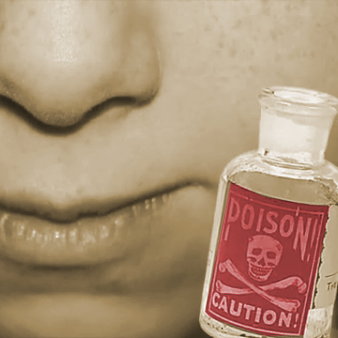
When I first read the summary of The Sweetness at the Bottom of the Pie I was a little skeptical. An 11-year old chemist with a passion for poisons delves into the world of philately (stamp collecting) to solve a murder. But what I discovered was an engaging and entertaining tale of intrigue, conspiracies, personal, and chemical interactions.
Meet Flavia de Luce, a new breed of detective that has the literary scene talking. An 11 year old that stumbled upon a chemistry textbook belonging to the mother she never knew and, with help from a fully stocked laboratory last used by her great uncle, dives head first into the world of chemistry. She falls in love with finding out how the world works - with the aforementioned interest in poisons. Much the same way, she stumbles into her first case when a dead bird is found on her doorstep holding a Penny Black. The next morning she finds a man dead in their garden and her father is suspected of murder.
She is quite intelligent and thinks that she has adult world figured out, but retains the wonderment and energy of a child. This provides some unique insight and humor. For example, during a dangerous situation she calmly remembers her older sister's advice on how to defend herself against boys - a swift kick to the Casanovas. But she then laments how she doesn't know where the Casanovas are located. Using her wits, charm, size, and even a little chemistry, she discovers the true villain.

Setting of Britain in the '50s Enhances Story
I thought that making an 11 year girl the narrator (and chemist) of a murder mystery would be difficult. But she conveys an infectious energy and excitement about how chemistry makes the world work and wanting to discovery it all. The author, Alan Bradley, also brilliantly sets the story in the English countryside in 1950. This allows for a beautiful setting full of characters and history, which he is wonderful with. (I listened to the audiobook version and the English narrator also helped.) More importantly, in my mind, this also allows for it to be plausible for an 11 year old to have the freedom to roam the countryside and conduct her own experiments alone. Though she does speak to the practice of safety in the laboratory, I think this would hardly be allowed in today's time. Bradley has also stated, "I wanted to focus on some bygone aspect of British life that was still there in the '50s but has now vanished."
The time period does introduce some other aspects into the story. As a member of a land-owning family Flavia has a tremendous family history and, though the family has seen better days, they have servants. These are lovingmembers of the family but subject to strict rules as to the type of interaction allowed and what they say to each other - though they may be feeling something deeper. Some of the more unenlightened views of the time come out also, such as Flavia often being doubly written off when she expresses an opinion because she is a child and a girl. While much of the family interactions are distant and rigidly formal, I enjoyed the wordplay of mid-century British slang, and the interaction between Flavia and her sisters is quite entertaining. This was a really fun read that managed to inject chemistry into the storyline.
Flavia is being hailed as a new breed of detective and getting a lot of attention for the inspiration she is providing for young readers, and especially young female readers. Hopefully, she can inspire some future aspiring chemists and chemical engineers. I know that she has won a place among my favorite detectives. This is the first book in The Buckshaw Chronicles, and I will be reading the following books. I have also seen recommended as a companion book on toxicology The Poisoner's Handbook: Murder and the Birth of Forensic Medicine in the Jazz Age. Perhaps one of these will be a future review.


